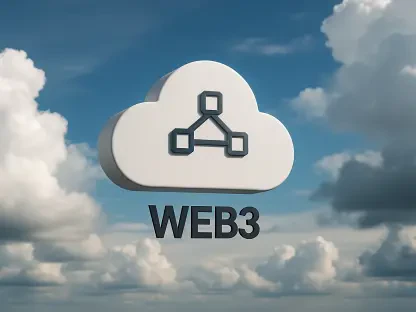In the era of digital evolution, primary schools are increasingly harnessing cloud technology to redefine their approach to print management. Despite digital devices taking center stage in educational settings, physical paper remains indispensable due to its role in cognitive development through writing and illustration exercises. This shift towards cloud solutions is not just a technological update but a strategic reimagining of school operations, promising enhanced efficiency, cost savings, and improved security. As primary schools undergo this transformation, it becomes crucial to understand the myriad benefits cloud print management offers, alongside the challenges faced during its implementation.
Rising Trend of Cloud Print Management in Schools
Technological Advancements and Cost Efficiency
Over recent years, educational institutions have embraced cloud print management as part of a broader technological trend. The integration of such systems stems from substantial advancements in technology, leading to reductions in costs and enhancements in security protocols. By centralizing print operations, schools can avoid the hefty expenses associated with traditional on-site print servers, such as hardware procurement and ongoing maintenance, in favor of a streamlined, cloud-based alternative. With cloud solutions, print management is hosted on external servers, facilitating minimal on-ground infrastructure.
By transitioning to the cloud, schools are breaking free from inefficient and outdated technology, allowing them to redirect resources toward more meaningful educational investments. This shift results in tangible cost savings, as schools can significantly lower expenses related to hardware, energy consumption, and IT staffing. Yet, the benefits are not merely financial; the cloud provides a flexible framework that elegantly scales to accommodate fluctuations in school size, student numbers, and educational needs without incurring additional burdens.
Security Enhancements and Operational Efficiency
Security has always been a concern for schools contemplating the move to cloud print management. Traditional on-site servers offered a sense of physical security but fell short on providing advanced cybersecurity features. With cloud solutions, educational institutions gain access to robust security measures such as data encryption, secure user authentication, and detailed audit trails, ensuring that sensitive information remains protected. This adherence to high security standards is essential in safeguarding student data and maintaining the confidentiality of administrative processes.
Additionally, operational efficiency is markedly improved with cloud print solutions. Staff members enjoy seamless access to printing facilities from any device, whether on or off-campus, significantly reducing the time and effort spent on managing print jobs. Secure release printing ensures print jobs are kept in a centralized queue, allowing staff to retrieve them from the nearest available printer, thereby optimizing resource allocation and minimizing delays. These enhanced functionalities turn print management into a simple and smooth task, liberating educators and administrative personnel to focus on delivering quality education.
Overcoming Challenges in the Cloud Transition
Historical Barriers and Emerging Solutions
The journey toward adopting cloud print management in primary schools has not been without challenges. In the initial stages, high implementation costs and a scarcity of dedicated IT staff deterred many schools from transitioning away from established print infrastructures. Concerns over data security and the reliability of outsourced cloud services further compounded hesitations. Faced with evolving technological landscapes, many institutions prioritized other pressing digital transformations over print management, which was often relegated to the background.
However, developments in cloud technology have allayed these concerns by presenting affordable, secure, and user-friendly solutions. Designed specifically for educational environments, cloud print management systems tackle historical barriers with efficacy. Schools once reliant on expensive, high-maintenance on-site servers can now opt for external service providers to handle print operations, thereby alleviating IT personnel and minimizing initial investments. These contemporary solutions ensure consistent service reliability, elevating the role of print management from a logistical challenge to a strategic asset.
Streamlining Processes and Transition Management
Transitioning to cloud-based systems involves careful planning and implementation, requiring strategic coordination among stakeholders. Schools must undertake comprehensive assessments of their existing print setups to understand the unique needs and challenges they face. Through collaboration with cloud solution providers, institutions can tailor systems to accommodate specific requirements, ensuring that the shift is seamless and beneficial in the long run. Implementing change management strategies is also crucial to facilitate adaptation among staff members, creating an inclusive environment that champions technological innovation.
With the move to cloud systems, institutions experience an overhaul of internal processes, fostering an atmosphere where management is streamlined, and collaboration is encouraged. Automated updates and centralized controls reduce operational complexities, allowing IT teams to channel their expertise toward more strategic initiatives. This not only enhances functionality but also instills a sense of confidence and trust among users, encouraging widespread acceptance of the new technology. Once obstacles are navigated, schools stand to gain from improved organizational efficiency and operational autonomy.
The Multifaceted Benefits of Cloud Print Management
Sustainability and Environmental Impact
The implementation of cloud print management brings with it a host of benefits, among which sustainability is a key focus. Traditional print setups often led to excessive wastage and environmental degradation due to unchecked resource consumption. With cloud systems, schools can monitor and regulate printing activities, identifying inefficiencies and enforcing sustainable practices such as print quotas and double-sided printing. By optimizing usage, institutions can significantly reduce their carbon footprint, contributing to broader environmental conservation efforts.
Additionally, the emphasis on digital documentation and communication reduces dependency on physical paper, promoting a culture of eco-consciousness and responsibility among students and staff alike. Schools take pride in aligning their operations with sustainable development goals, setting examples for the younger generation to value and protect the environment. The move not only highlights the practical and economic advantages of the transition but also underscores the ethical imperative of harnessing technology for eco-friendly advancements.
Scalability and Adaptability
Cloud print management equips primary schools with an agile and scalable approach to printing needs, ensuring readiness to adapt to changing circumstances. This flexibility is particularly beneficial in educational contexts, where fluctuations in student enrollment or curricular requirements can dramatically impact print demands. By seamlessly accommodating variations in user numbers and print volumes, cloud solutions afford institutions the freedom to focus on delivering enriching educational experiences, unencumbered by operational constraints.
The adaptability of cloud platforms extends to evolving technological advancements, making it easier for schools to integrate additional innovations in the future without overhauling existing systems. As education increasingly embraces digital transformation, cloud print management provides a robust foundation that supports continuous development and progress. Institutions are empowered to future-proof their setups, ensuring enduring relevance and competitiveness in an ever-evolving educational landscape.
Case Study: Diocese of Norwich Education and Academies Trust (DNEAT)
Implementation and Outcomes
The Diocese of Norwich Education and Academies Trust (DNEAT) serves as a poignant example of the success and impact of transitioning to cloud print management. As a multifaceted organization overseeing 35 schools in the United Kingdom, DNEAT dealt with substantial challenges associated with high printing costs and the complexities of on-site infrastructures. Facing these hurdles, the trust made the strategic decision to implement PaperCut Hive, a leading cloud print management solution, which revolutionized their operations.
By leveraging this innovative software, DNEAT effectively eradicated the necessity for localized servers, relying instead on a cloud-based framework that delivered unparalleled functionality and convenience. Staff and administrators gained the ability to manage print jobs securely from any device, forging a collaborative environment that fostered efficiency and adaptability. The implementation of this cutting-edge system resulted in notable reductions in both printing costs and paper wastage, exemplifying the tangible advantages of cloud print management in educational settings.
Broader Implications and Future Directions
In today’s digital age, primary schools are revolutionizing their print management through cloud technology. Even as digital gadgets dominate the classroom landscape, the use of physical paper remains vital, especially for fostering cognitive growth in young students during writing and illustration activities. This shift to cloud-based systems is far more than a mere tech upgrade; it represents a strategic overhaul of school operations that promises heightened efficiency, significant cost reductions, and bolstered security measures. With schools embracing this transformation, it becomes essential to grasp the extensive advantages that cloud print management holds, along with the potential hurdles schools might face during its implementation. As educators navigate this innovative terrain, understanding both the technical benefits and the practical challenges is key to realizing the full potential of cloud technology in reshaping educational environments for the betterment of students and institutions alike.









